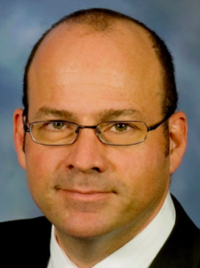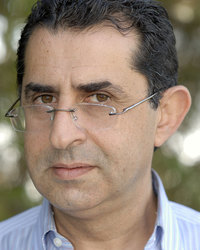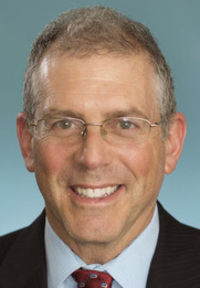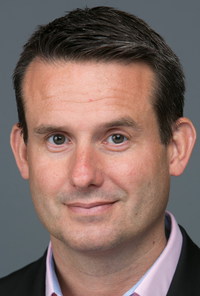Fake Press Releases: What Have We Learned in The Past Twelve Years?
 August 25, 2000. That's a day that will forever be burned
into my memory, right up there with the day I got married and other turning
points in life. In this case, that was the day that I was running hot Internet
startup Internet Wire, freshly funded by Sequoia Capital and Hummer Winblad,
and my world turned upside down for a few weeks by what is still the best-known
case of press release fraud, the so-called Emulex hoax.
August 25, 2000. That's a day that will forever be burned
into my memory, right up there with the day I got married and other turning
points in life. In this case, that was the day that I was running hot Internet
startup Internet Wire, freshly funded by Sequoia Capital and Hummer Winblad,
and my world turned upside down for a few weeks by what is still the best-known
case of press release fraud, the so-called Emulex hoax.
Shortly before 7 am, I was jarred out of my early-morning, pre-coffee haze by a phone call from my COO to hear that there was a problem with a press release we distributed for a publicly traded company that's causing a panic in the stock. By 7:30 a.m,. the stock has dropped more than 60 percent (that's $2.4 billion) and trading is halted by NASDAQ. What caused the drop was a Bloomberg report, based on a press release we distributed, that Emulex was restating its last two years earnings, including its current quarter to a loss, and that its CEO was resigning. Bloomberg called Emulex headquarters after the release hit, and then it ran the story without comment from the company when nobody was immediately reachable at the California-based company at 6:30 am.
Bad news for a public company is almost always is released just after the markets close, preferably on a Friday, to give time for explanations and for traders to properly digest and interpret the information, but this apparently didn't raise enough of a flag to stop a Bloomberg reporter from running a news story based solely on the press release, which was then picked up by many other outlets and the sell-off was on. Even outlets that would not report on the subject matter until they had a comment from the company still reported on the stock plummeting. When the smoke cleared, and the CEO from Emulex denied any knowledge of the press release or the charges, it was clear a hoax mystery was on.
When I got into the office around 8 am (trying to shower and dress around nonstop phone calls), I was greeted by my assistant with urgent messages from AP, Reuters, CNN, the SEC, my investors, Department of Justice and scores more. "I have the Wall Street Journal on one line and the FBI on the other," she added, "and CNBC is in the lobby." "Tell the Wall Street Journal and everyone else we'll have a statement by noon," I said, summoning my decade of crisis management skills on behalf of clients, "and I'll take the FBI."
Ten days and three appearances on CNN later (including one that day right after issuing our statement reiterating that we were the victim here, not the perpetrator, and pledging our cooperation with the authorities), we were able to help the FBI, who put 20 agents on the case, crack the mystery by analyzing the inevitable digital footprints left by the perpetrator and discovered it was a former night-shift employee who knew enough about the inner workings of the system to pull off the fraud. He made $250,000 by shorting Emulex, and the FBI was able to trace everything from the place he initially created the fake account (a community college library in Torrance, CA) to the place he made the trades (ironically, a casino in Las Vegas), gather witnesses putting him at those locations and assemble an airtight case. He was arrested and prosecuted, Internet Wire survived, continued to grow and, three years later, the company received new investment and a preferred reseller agreement with NASDAQ, the same entity that stopped trading on Emulex that historic day.
This partnership pretty much erased all concerns about our security measures for public companies, although for additional distance from the incident and to highlight the broadening of its scope away from tech companies and into the full financial markets, Internet Wire changed its name to Market Wire. We sold the company in April, 2006 to CCN Matthews, which sold it again in 2007 to its current owners, OMERS Capital, and the company rebranded as one word, Marketwire, the highly successful, world's third largest newswire.
The Emulex hoax was a shock to the entire news-PR industrial complex. Dow Jones, CBS Marketwatch and several other services removed us as a source (all temporarily; we were reinstated as soon as we showed new security procedures that made it nearly impossible to pull off a similar fraud). Many news sources questioned all press release services security measures (the other major newswires were not without their own prior problems with false press releases, albeit on a smaller scale). The good that came out of the Emulex hoax was a new vigilance by all newswires catering to the financial markets, as well as a reminder to all financial media of the old adage that a press release should be considered a lead on a story, not the story itself, and that being second to cover a story and be right is vastly superior to being first and wrong.
Where This Week's PRWeb-ICOA-Google Press Release Hoax Fits In
Here we are, 12 years and three months later (almost to the day), and we're discussing another false press release involving public companies. Here's what's different this time:
PRWeb has never presented itself to the industry as a full-service disclosure newswire for public companies. But since it's the largest of the non-disclosure newswires, it gets into a lot of portals and is read by many journalists, even though it brands itself as a "direct to consumer" newswire. I don't believe that PRWeb thought they'd be victimized by a stock scam because they're not really seen by the industry as a disclosure vehicle.
Blogs pretty much didn't exist in August, 2000, but now dominate the breaking of tech news. TechCrunch was quick to report this story, then quick to take it down and ban PRWeb as a source going forward (which if history is a guide, this may be reconsidered after a proper passage of time and addition of additional security guidelines). The release was also run quickly as news by other top blogs, including Business Insider, Engadget, NextWeb, VentureBeat, as well as Forbes, Reuters and USA Today. If you think the speed of financial newswires to spring into action on a hot story was quick in 2000, the speed of the blogosphere is almost blinding by comparison.
It doesn't appear that any huge sums of money were made or lost by mainstream investors, so it may never be known what the motivation for this hoax was. All we know is that the stock price of this penny stock briefly quintupled and that the hoax appears to have been originated in Aruba. The trading volume also went from virtually nothing to higher figure that put the total gain around $225,000, all among penny stock traders; the Emulex fraud only netted $250,000 for the perpetrator while costing some $50 million in actual trading losses for mainstream investors and programmatic trading). We may still learn more in coming weeks.
What I'm really shocked at was that the old Who song line "we won't get fooled again" did not apply to as many journalists of this era as I thought it would. Ask yourself these questions, if you're on either side of the news-PR industrial complex: Would Google really acquire a small-cap public company for nearly 500 times its market cap? Would Google really put the dateline as Rhode Island when the first sentence makes it clear that Google is doing the announcing? Would Google allow a press release to be put out about an acquisition without its ticker symbol and with typos and bad grammar galore?
Michael Terpin is the founder of SocialRadius, a social media marketing consultantcy. He began SocialRadius in 2007 and has been engaged in social media marketing campaigns since 2003 through its sister company Terpin Communications, a leading international public relations boutique. Terpin also founded Marketwire, one of the world’s largest and most comprehensive international press release newswires. Originally known as Internet Wire, Marketwire was acquired in April 2006 by Toronto-based media company, CCN Matthews, and is now owned by OMERS Capital Partners, the private equity arm of a $41 billion pension fund. Marketwire employs more than 200 people and has annual revenues of more than $70 million, with offices on four continents. Terpin holds an MFA in Creative Writing from SUNY at Buffalo and a dual bachelor degree in Newspaper Journalism and English Literature from Syracuse University. He serves as an advisor to SU’s Newhouse School of Public Communications, where he was inducted into its prestigious Wall of Fame. Terpin was a finalist in the 2000 Ernst & Young Entrepreneur of the Year Award. This piece was originally posted on his blog, at socialmediaworld.com.
 Tony Greenberg
Tony Greenberg
 Ivan Nikkhoo, Managing Partner – Navigate Ventures
Ivan Nikkhoo, Managing Partner – Navigate Ventures Michael Sherman, Neil Elan and Karine Akopchikyan
Michael Sherman, Neil Elan and Karine Akopchikyan Alejandro Guerrero
Alejandro Guerrero Eric Eide, Alliance for SoCal Innovation
Eric Eide, Alliance for SoCal Innovation Kevin DeBre
Kevin DeBre Braven Greenelsh
Braven Greenelsh Rob Freelen, Los Angeles Market Manager, Silicon Valley Bank
Rob Freelen, Los Angeles Market Manager, Silicon Valley Bank Braven Greenelsh
Braven Greenelsh Kaäre Wagner, Silicon Valley Bank
Kaäre Wagner, Silicon Valley Bank Al Guerrero, Silicon Valley Bank
Al Guerrero, Silicon Valley Bank Rob Freelen, Los Angeles Market Manager, Silicon Valley Bank
Rob Freelen, Los Angeles Market Manager, Silicon Valley Bank Sid Mohasseb
Sid Mohasseb William Hsu
William Hsu Dinesh Ravishanker
Dinesh Ravishanker Dina Lozosfky
Dina Lozosfky Melinda Moore
Melinda Moore Jaspar Weir
Jaspar Weir Erik Caso
Erik Caso Tracy Olmstead Williams
Tracy Olmstead Williams Dave Berkus
Dave Berkus Bernard Luthi
Bernard Luthi Peter Cowen
Peter Cowen Nick Hedges
Nick Hedges Eric Larsen
Eric Larsen Michael Terpin
Michael Terpin Steve Reich
Steve Reich